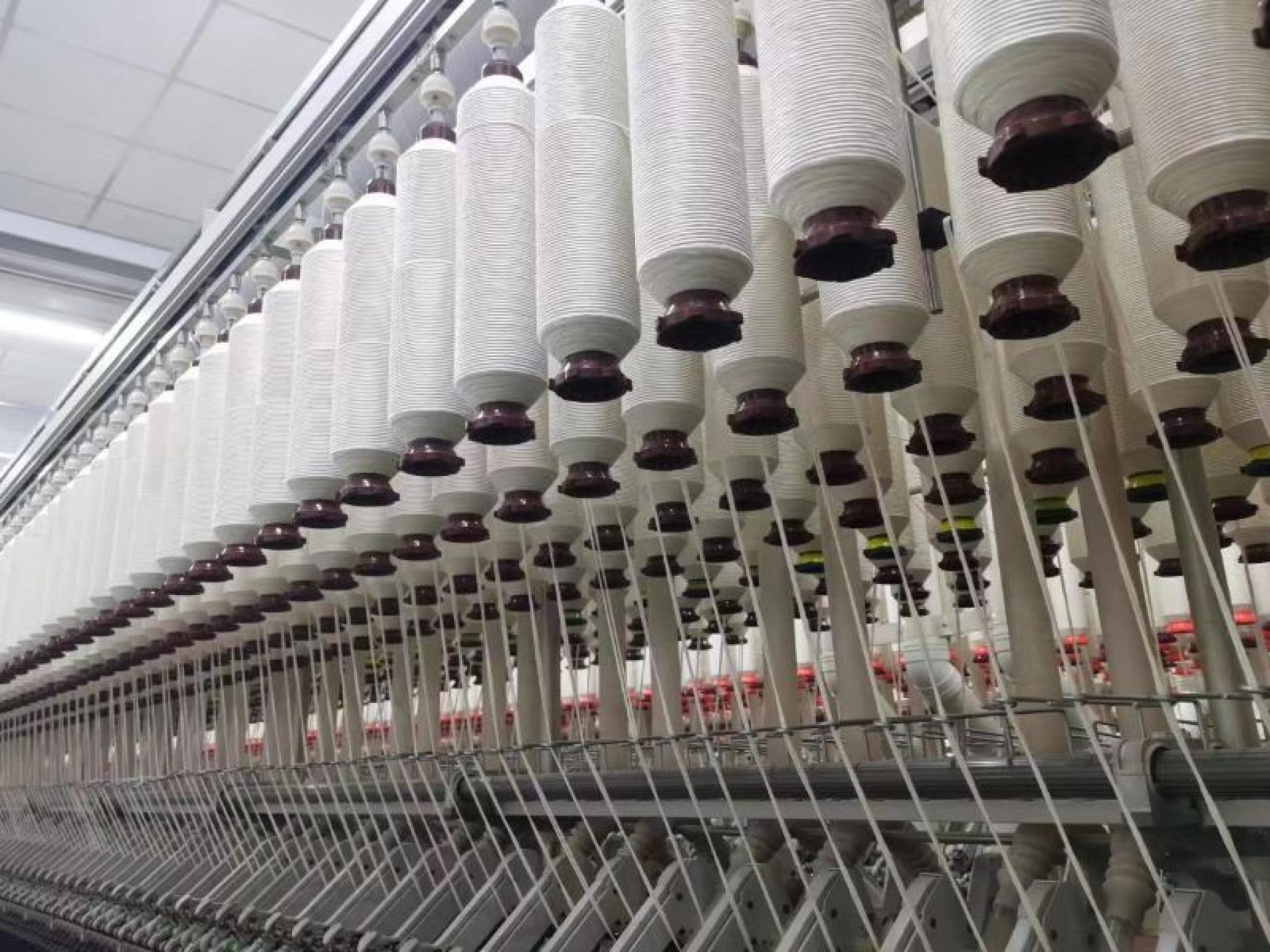
Key Takeaways:
- Texhong is preparing to launch a major facility in Vietnam that will sharply boost its fabric production to complement its larger cotton yarn business
- Company now manufactures nearly 40% of its output in the Southeast Asian nation and is one of the biggest U.S. cotton buyers in the world.
By Doug Young
Recent Covid lockdowns that have paralyzed business and festering trade tensions have sent western companies scrambling to diversify their supply chains from China in the last two years. Some are also taking the opportunity to reap benefits ranging from lower tariffs and labor costs in other parts of the world such as Southeast Asia. While such movement is new for makers of high-tech products like smartphones, it’s been happening more than a decade for manufacturers of more traditional products like textiles that are still one of China’s biggest exports.
One company that looks ahead of the curve in those trends is Texhong Textile Group Ltd. (2678.HK). The company has found a fertile ground for its drive in Vietnam, which now accounts for nearly 40% of its production and growing. Texhong first entered Vietnam in 2006, back when most textile companies were still quite content with their China operations. Its $1.6 billion in Vietnam investments over subsequent years have spun out a giant that has become the country’s largest maker of cotton yarn.
The benefits of diversification also show up in Texhong’s latest results, which look quite impressive for such an old-mill company.
Its latest annual report, released in mid-March, shows its revenue rose 35.5% last year to a record high of 26.5 billion yuan ($3.9 billion). Its gross margin also saw big improvement over that period, rising 8.3 percentage points year-on-year to 22.1%. Those two factors provided a potent combination that fueled a more than fourfold profit rise to 2.69 billion yuan for the year.
The company attributed the gains to its own improved operating efficiencies, as well as higher prices for both its yarns that account for about three-quarters of sales, as well as its fabric business that accounts for the remainder. Calculations using figures from Trade Data Monitor show the price of cotton yarn rose 26% last year to $2,995 per metric ton from $2,370 in 2020.
Investors quite liked the report, with the company’s shares rising 8.6% the day after its release. Despite its 20% decline over the last year, Texhong’s stock has also outperformed the broader Hang Seng Index and Hang Seng Consumer Goods & Services Index, which are down 30% and 34% over the same period, respectively. Who says textiles can’t be exciting, especially in the current volatile climate where they may look like islands of relative stability?
On a valuation basis, the company currently trades at a price-to-sales (P/S) ratio of 0.26, which is roughly in the middle of where many of its peers now trade. Those relatively low figures reflect a group that’s quite good at generating sales, but traditionally didn’t get the kind of premiums awarded to sexier high-growth sectors like software and e-commerce.
Vietnam’s appeal
Texhong’s Vietnam move is part of Southeast Asia’s broader appeal to the textile industry. The country’s share of the U.S. textile and apparel market has grown steadily in recent years, rising to 15% in 2020 from 12% two years earlier, according to research by the Office of Textiles and Apparel (OTEXA) and Rong Viet Securities.
Despite Texhong’s strong Vietnam base, China is still clearly one of its major customers due to the latter’s big field of actual apparel makers that account for many of Texhong’s 5,000 customers. China is also easily Vietnam’s largest customer for cotton yarn, accounting for 83% of the country’s cotton yarn exports, according to Trade Data Monitor.
From the diversification topic, we’ll spin into another subject that’s near and dear to textile and apparel makers’ hearts, namely cotton. This particular topic is of interest not only because it’s a central component to the business of Texhong and its peers, but also because their sustainability efforts will likely win them more investors. Cotton from the U.S. is famous for its traceability and supply chain accountability. Adding to this is that Texhong’s customers have shown a recent preference for the U.S. product over Chinese cotton.
The company also places great emphasis on its disclosure in its reports, stressing that it has a system that can “trace the cotton fiber from the time it is received into the warehouse through the entire yarn production process to the finished yarn being stocked into inventory.”
As the latest big picture data shows, the U.S. is the biggest cotton supplier to Vietnam, accounting for more than 50%, followed by Brazil, India, Australia and Cote d’Ivoire, according to analysis using the country’s customs data. Texhong is one of the biggest buyers of U.S. cotton for both its Vietnam and China operations, with the company estimating it bought 9% of all U.S. cotton exports last year, accounting for more than half of its purchasing of the material during that time.
We’ll close with a look at Texhong’s plans for the year ahead, which show the potential for similar growth from last year’s levels as it continues to pour more resources into Vietnam. The plans also include an acceleration in the company’s product diversification to boost its smaller fabric business with the planned start of full production at its newest facility in Vietnam later this year.
The company said it is targeting sales of 880,000 tons of yarn this year, representing a modest 7.6% rise from the 2021 figure. But it’s planning far bigger increases of 31% for its woven garment fabrics, and an even larger 56% for its knitted garment fabrics as the new production facility comes onstream. It noted that it is likely to benefit from a “favorable operating environment” for large-scale textile companies that looks set to continue through this year.







